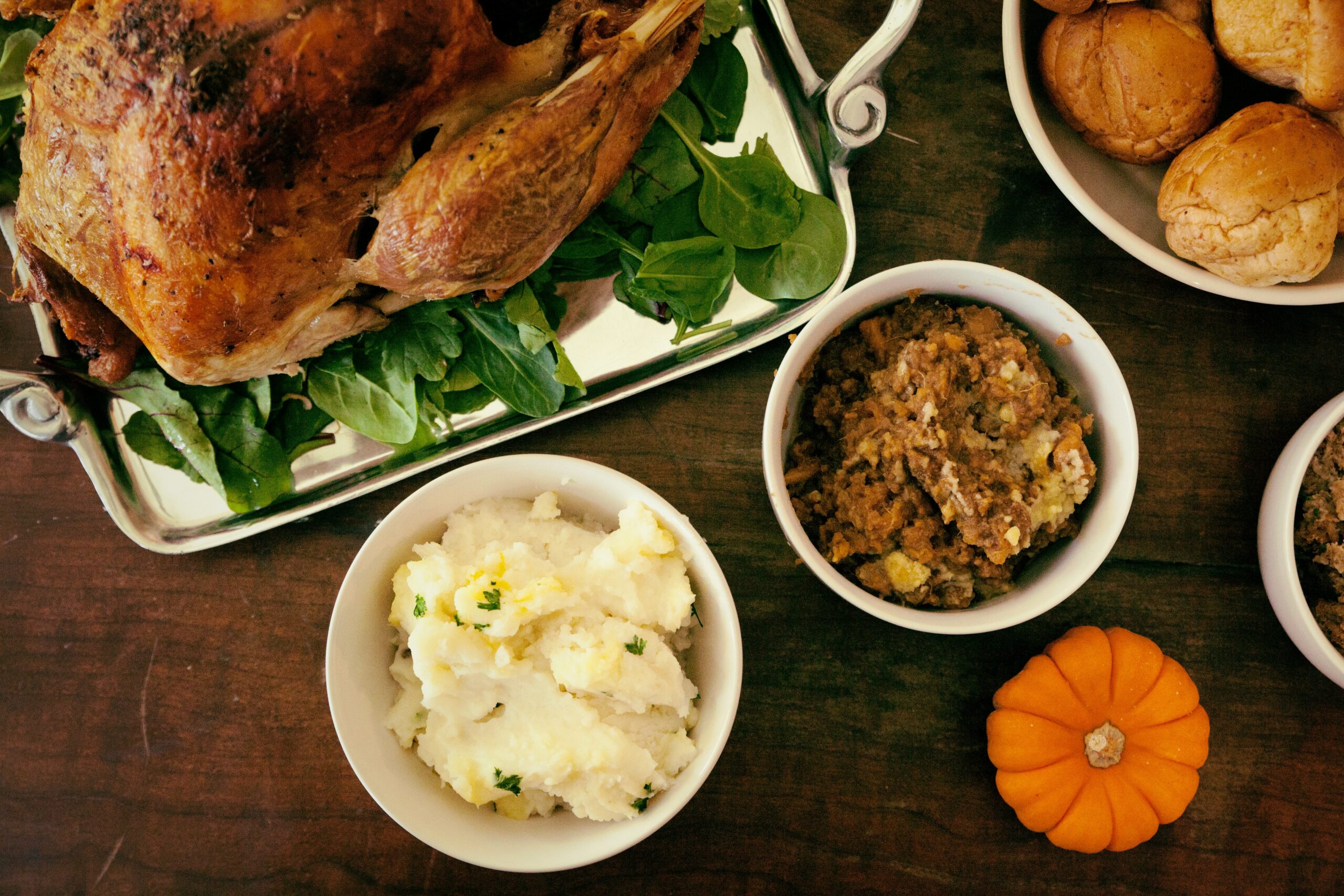Thanksgiving is a cherished time for gathering with loved ones, savoring delicious meals, and reflecting on gratitude. Yet, it’s also often associated with overindulgence and post-holiday guilt. As a dietitian, I want to share how practicing intuitive eating during Thanksgiving can help you enjoy the holiday fully, without stress or guilt.
What is Intuitive Eating?
Intuitive eating is a holistic approach that encourages you to trust your body’s natural hunger and fullness cues while fostering a healthy relationship with food. It’s not a diet; it’s a mindset shift that moves away from rigid food rules and embraces balance and mindfulness.
Why Practice Intuitive Eating on Thanksgiving?
Thanksgiving meals are notorious for being abundant and varied, which can trigger a “feast or famine” mindset. Intuitive eating helps you enjoy your meal without guilt or the urge to restrict yourself afterward. Here’s how to apply the principles of intuitive eating to your Thanksgiving celebration.
1. Give Yourself Unconditional Permission to Eat
One of the core tenets of intuitive eating is allowing yourself to enjoy all foods without labeling them as “good” or “bad.” Thanksgiving foods are often rich and indulgent, which might make you feel like you’re breaking a dietary rule. But remember, giving yourself permission to enjoy your grandmother’s famous stuffing or a slice of pumpkin pie is essential for building a positive relationship with food.
Tip: Before the meal, take a moment to remind yourself that no food is off-limits. This helps reduce the allure of “forbidden” foods and decreases the urge to overeat.
2. Stay Present and Mindful
Thanksgiving can be hectic with lively conversations and bustling kitchens, which makes it easy to eat without noticing. Practice mindfulness by taking a moment to truly engage your senses with each bite. Notice the flavors, textures, and aromas of the food.
Tip: Put your fork down between bites and savor the moment. This simple act helps you slow down and better recognize when you’re satisfied.
3. Listen to Your Hunger and Fullness Cues
Check in with your body before, during, and after the meal. Are you hungry, comfortably full, or overstuffed? Intuitive eating encourages you to respond to your body’s signals rather than external cues like the sight of more food or the pressure to clear your plate.
Tip: Start with moderate portions, knowing you can always go back for more if you’re still hungry. This approach reduces the pressure to “load up” your plate and allows you to better assess your fullness.
4. Release Any Judgment
It’s common to feel guilt or shame after enjoying a hearty meal, but self-judgment is counterproductive. Remind yourself that Thanksgiving is just one day, and it’s okay to indulge without repercussions. The act of enjoying food with loved ones is an essential part of cultural and social well-being.
Tip: If you find negative thoughts creeping in, practice self-compassion. Remind yourself that one meal does not define your eating habits or health.
5. Focus on Gratitude Beyond Food
Thanksgiving is a time for gratitude, and while the food is a highlight, remember to appreciate the other aspects of the holiday. Whether it’s sharing stories, laughter, or taking a post-dinner walk, shifting focus from solely food to connection and thankfulness can help you feel more content.
Tip: Before you eat, take a moment to reflect on what you’re grateful for this year. This practice adds depth to the holiday and can help reduce stress around food.
Intuitive eating during Thanksgiving is about more than just enjoying a meal—it’s about honoring your body, savoring traditions, and nurturing your well-being. This year, approach the holiday with the confidence to eat in a way that feels good for you, free from guilt or restriction. Trust yourself, listen to your body, and make room for joy.
Thanksgiving is a time to embrace abundance, not just on the table, but in moments shared and memories made. Enjoy every bite and every moment.
Have a Happy & Healthy Thanksgiving!


